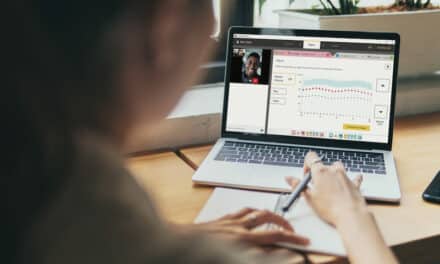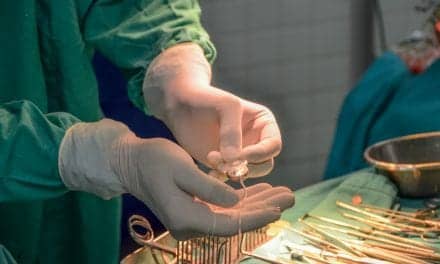
Q Could you talk a little about your position as vice president for technology transfer?
A This position was created several years ago in recognition of an important part of our mission, which is to try to benefit people with hearing and balance disorders. Some of the House Ear Institute’s research is applied to our mission through the House Ear Clinic and other clinics, through knowledge that is imparted to physicians or [incorporated into] diagnostic procedures…things of that sort. But for some of it to be used, especially the knowledge and the results from our research in the device area, the research has to be commercialized in some way. This is also true in various diagnostic technologies, and I’m sure it will be true in the future in the developing biotech areas pertaining to hearing.
The vice president for technology transfer position was created in recognition of the importance of that process to our mission. It’s a source of revenue for us to fund our research program, and it’s consistent with our mission.
Q Can you elaborate on the technology transfer process? What is involved?
A Technology transfer is the process of taking laboratory research results and finding applications in the commercial arena…[the process] consists of several steps.
First, we have to identify those research activities that may have commercial value. Second, we have to follow the standard methods of obtaining protection for intellectual property or inventions. The intellectual property protection is usually obtained through patents or copyrights, so we might file a patent application or register a copyright to protect the intellectual property. Then we seek out the appropriate commercial entity for licensing of the intellectual property. We might talk with several different companies. Some of them might be working on the same problem or the same area themselves. They may be well situated and go forward, and some of them might be very interested. Then we…might do several different things. If the work is all done on the development of the technology, we might just license it to them. Really, what we do is give them an exclusive or nonexclusive license to the rights, which are protected by our patent. Or (and this is most often the case), there’s usually some more work that has to be done, especially in translating from the laboratory environment into a form that can be used in a commercial product. In that case, we might enter into a co-development agreement with this company, working with their engineers or scientists to refine the technology and make it suitable for use in whatever commercial product they might have in mind. We would work together with them and then at the end of that process that’s when they usually decide, “Yes, we want to license it,” or “No, we don’t want to license it.”
Q Could you talk about the product development process at HEI in general? What is your starting point?
A We start from biology or physiology or psychoacoustics or…clinical knowledge related to a particular disease or disorder. Then we will most likely seek to fund a long-term research program—let’s say to discover genes that cause hearing loss so that we can eventually arrive at a gene therapy that could identify or modify those genes or…replace them early on and prevent hearing loss from even occurring.
Now a company that wants to do gene therapy can’t afford to do that kind of research. It’s too long and risky. But a research institution like ours, with an applied mission, might try to fund some of the preliminary and pilot work, the feasibility work in this area. We would use the results of that research to go to the federal government, the National Institutes of Health, to try to get a basic research grant. The grant then funds the research that creates the knowledge that ultimately might be useful in solving the problem, for example finding the genes that cause hearing loss.
So we start on bigger problems and we start earlier and seek to obtain, usually, grants from the federal government, the National Institutes of Health to fund the basic research process. I don’t really like the term basic research. I like to think of it as more of long-term research and the process of knowledge creation. Once we create knowledge, then we have the opportunity to apply it to the immediate problems that we are working on.
Q Who are you working with now?
A We’re working with a variety of different companies. We’re working with companies in the infant screening and diagnostic areas. We’re working with companies in the hearing aid field. We’re working with companies in middle ear implants, bone anchored hearing aids, cochlear implants, auditory brainstem implants— a lot of device stuff as you can see. Diagnostic includes hearing diagnostics, physiologic diagnostics… things of that sort. Those are the main ones we are working with right now.
We are seeking opportunities to work with pharmaceutical and biotech companies, especially as our work on cell lines, gene therapies, and things like that goes forward.
Q How does your PhD in experimental psychology help you in your research?
A My formal training is in speech communication, and I have undergraduate training in math and physics as well. I’ve always been interested in the process by which sound is received by the ear and converted into neural impulses, which allows us to hear. I’ve also learned to do behavioral research and to study those phenomenon processes in my formal training.
I also spent six years in the university teaching and working in this area academically. I got tenure and decided that I wanted to move along. Then I went to 3M Company in St. Paul, and I was there for six years, and that’s where I really learned about the technology transfer process—the product development, the innovative things that go into taking these raw materials and making them into something. That has fascinated me, so I combined that with my basic research knowledge and training. And that’s what brought me to the House Ear Institute.
So I tend to think of House as being a place that’s …on one end, you’ve got academia and the knowledge creation process. At the other end, you’ve got industry with its need for applications to make money and serve the public. Then you’ve got a place like the House Ear Institute that sits in the middle between the two. We do the basic work but we also try to carry it forward and bring it over into applications. So it’s sort of like there’s a bridge between the laboratory and the application, and we’re sitting in the middle of that bridge.





